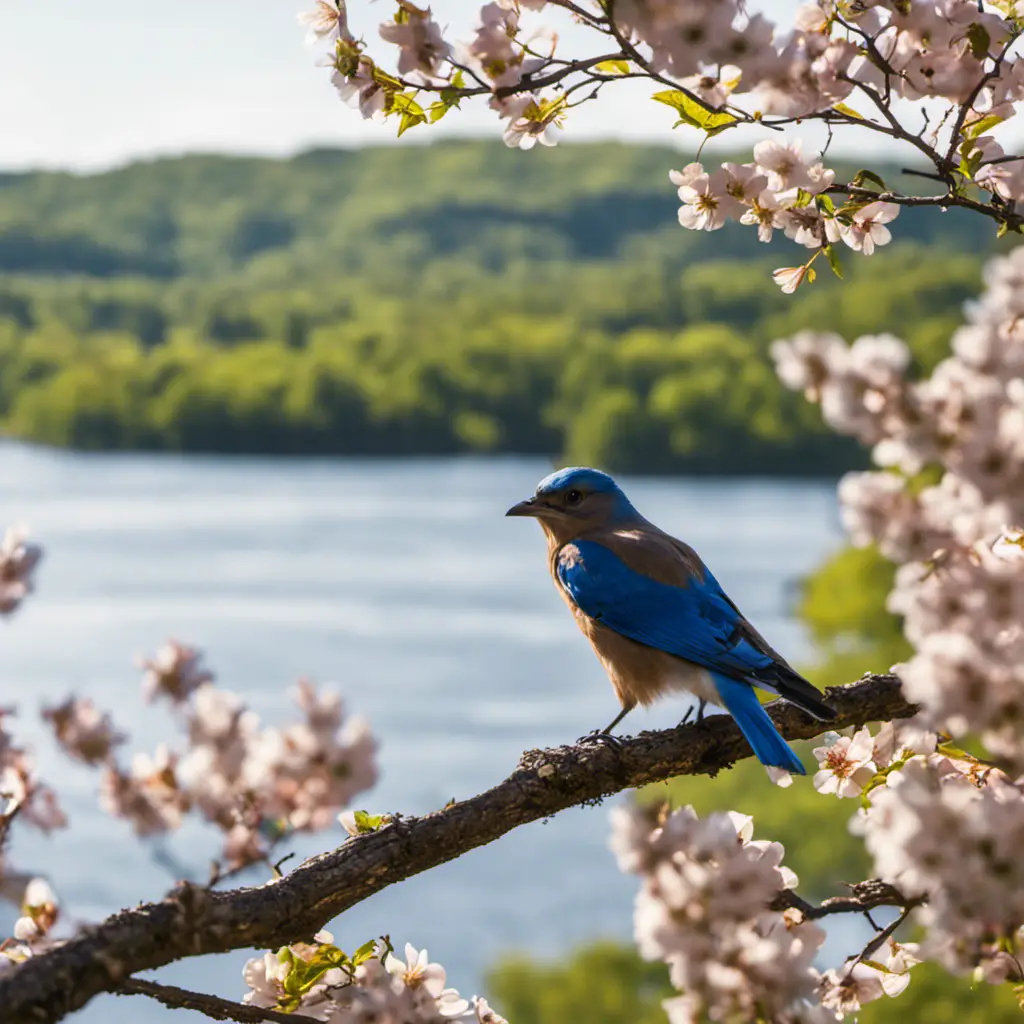Did you know that Alaska is home to more than 300 species of birds? In this blog post, we will take a look at the most common birds in Alaska. We will discuss their habits and what makes them unique. If you’re interested in learning more about the birds of Alaska, keep reading!
Common Backyard Birds of Alaska:
Pine Siskin
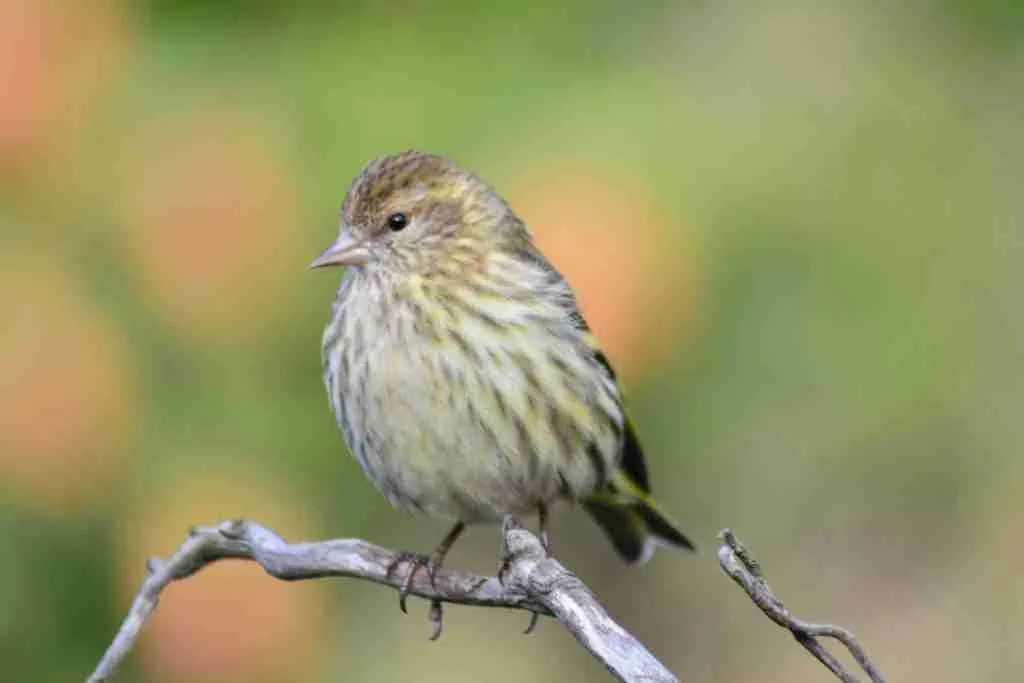
The Pine Siskin is a small finch with a streaked back, wings and tail. It has a yellowish breast and belly. The bill is thin and pointed. Pine Siskins are found in woodlands and forests across North America.
They eat mostly black oil sunflower seeds, but also insects. In the summer they build their nests in trees. Pine Siskins are social birds and often travel in flocks. They are known for their acrobatic flying and their ability to hang upside down from branches.
Pine Siskins are one of the few bird species that can taste sugar, which is why they are attracted to suet feeders and nectar feeders. Despite their small size, Pine Siskins are fierce defenders of their territories and will chase away much larger birds.
If you see a Pine Siskin in your yard, be sure to fill your bird feeders with thistle seed, sunflower seed, and suet to attract them. You may also want to put out a nectar feeder to attract them in the summer months.

Orange-crowned Warbler
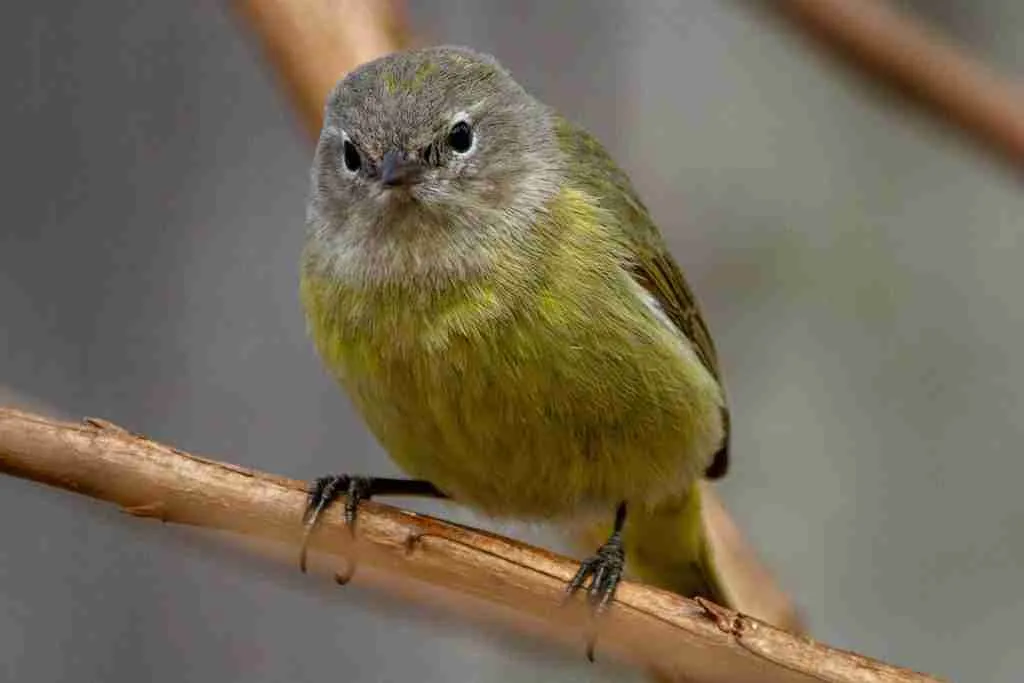
The Orange-crowned Warbler is a small songbird with olive-green upperparts and yellowish underparts. It has a white eye-ring and orange crown, which is usually only visible when the bird is excited or breeding. The diet of this warbler consists mainly of insects and spiders.
This warbler breeds in open woodlands and forests in Alaska. It nests in trees or shrubs, often close to the ground. The Orange-crowned Warbler is a shy bird and is usually seen alone or in small flocks.
It is not often seen at feeding stations. During the winter, this warbler can be found in woodlands, scrublands, and gardens in southern California.

Black-capped Chickadees
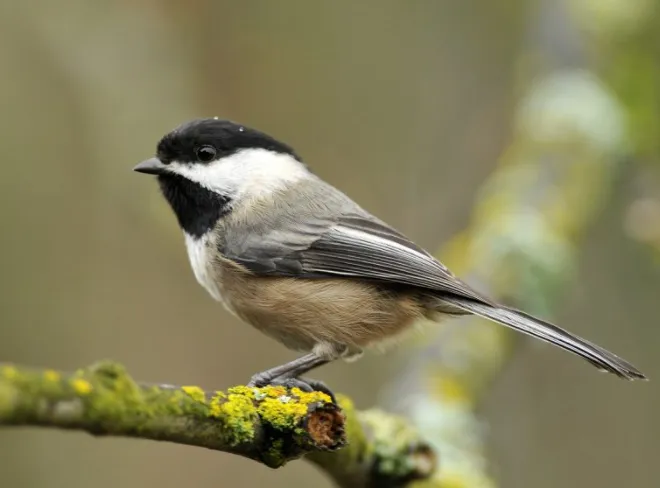
Chickadees are small, social birds that are found in North America. The males and females look similar, with grey upperparts, white underparts, and a black cap on their heads. They have a wingspan of around 12 cm (47 in) and weigh from 11 to 19 g (0.39 to 0.67 oz). Chickadees are active birds that are constantly on the move in search of food.
They primarily eat insects and other small invertebrates, but will also feed on berries and seeds. Chickadees are found in a variety of habitats, including forests, woodlands, and gardens. They are active during the day and roost at night.
Chickadees are social birds that live in small flocks. They are known for their high-pitched song, which is often used to communicate with other members of their flock.

Dark-eyed Junco
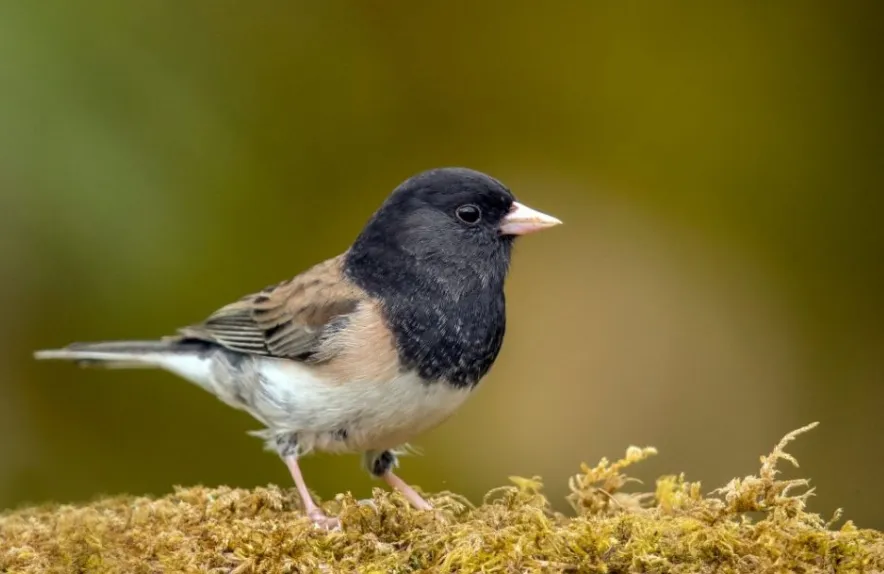
Dark-eyed Junco is one of the most common birds in North America. You can find them in nearly any habitat from forests to urban areas. They are small birds with gray upperparts and white underparts. The males often have a dark hood, while the females usually have a light brown cap.
Their diet consists mostly of black oil sunflower seeds and insects. In the winter, they often form flocks and feed on berries. Juncos are about six inches long and weigh an ounce.
The best way to identify a Dark-eyed Junco is by its call. They make a soft “tink” sound, which is different from other birds in their family. You can also identify them by their behavior.
They often bob their heads up and down when they walk. Juncos are shy birds, so they are not often seen in the open. Instead, they prefer to stay hidden in dense vegetation.

Boreal Chickadee
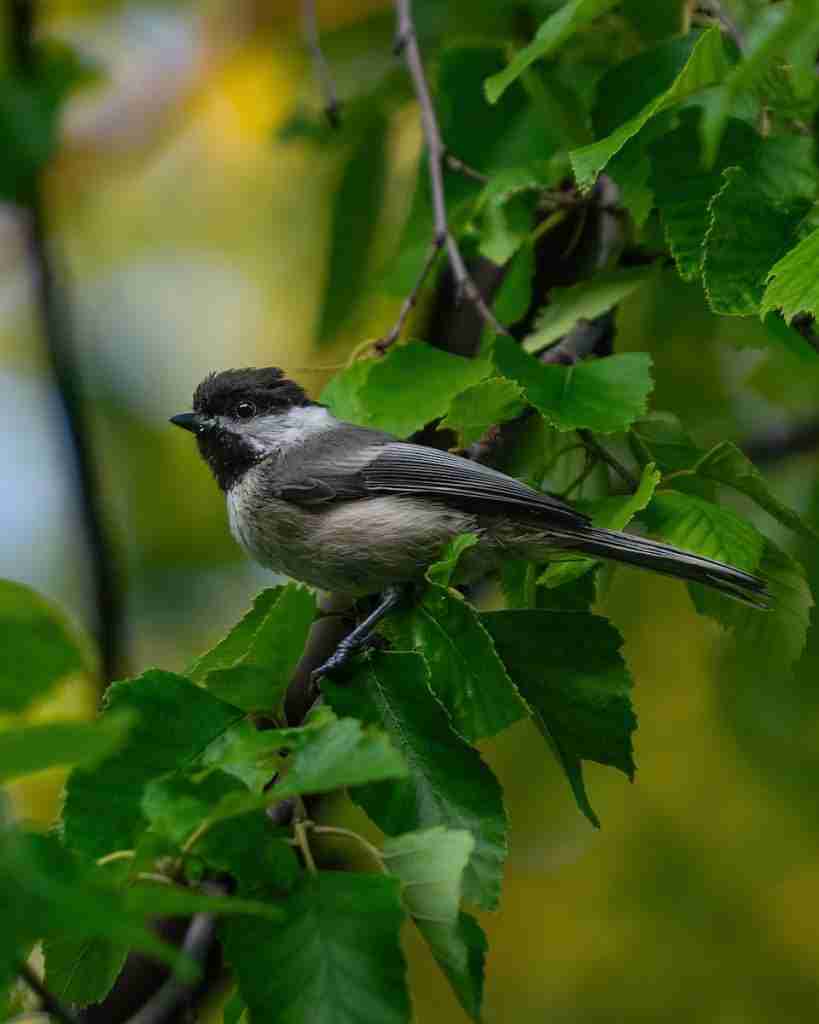
Identification: The Boreal Chickadee is a small songbird with a black cap and bib, white cheeks, gray upperparts, and pale underparts. It has a short tail and stout bill. Adult males and females look similar. These birds are often found in pairs or small flocks foraging in trees and shrubs for insects.
Size: Chickadees are small birds. They range in size from about four to six inches long and weigh less than an ounce.
Habitat: Boreal chickadees are found in the boreal forest regions of North America. This habitat is characterized by evergreen trees, spruce, fir, and pine. These birds are also found in scrubby areas, deciduous forests, and parks.
Behavior: Chickadees are social birds that often form flocks with other chickadees and small songbirds. They are active birds that are constantly foraging for food. Chickadees have a wide variety of calls and songs that they use to communicate with each other.
Diet: Boreal chickadees eat a variety of insects and spiders. They will also eat seeds, berries, and nuts. These birds often cache food in trees for later consumption. Chickadees have been known to store over 100 acorns in a single tree!

Red-breasted Nuthatch

(Sitta canadensis) is a small songbird with a black cap and white face. It has a reddish breast and belly, and blue-gray upperparts. This nuthatch is found in forested areas across North America.
It feeds on insects and seeds, often probing tree bark for food. The Red-breasted Nuthatch is a small songbird with a black cap and white face.
It has a reddish breast and belly, and blue-gray upperparts. This nuthatch is found in forested areas across North America. It feeds on insects and seeds, often probing tree bark for food.
The Red-breasted Nuthatch is about five inches long and has a wingspan of about eight inches. This bird is most active during the day, and can often be seen climbing up and down tree trunks. It nests in cavities in trees, and will sometimes use man-made nest boxes.
The Red-breasted Nuthatch is not currently considered to be at risk of extinction. However, like many other bird species, it is threatened by habitat loss and degradation.

American Robin
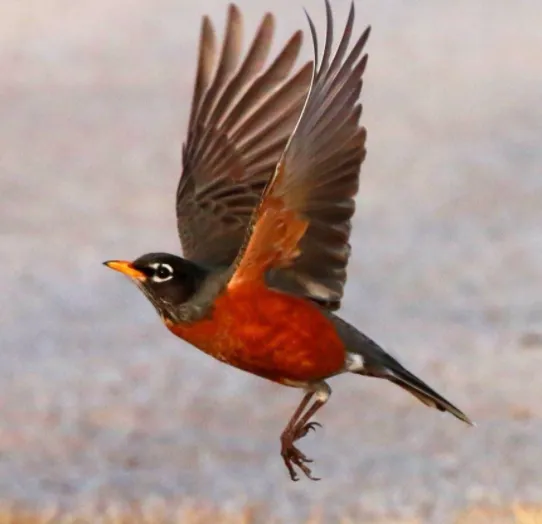
The American robin (Turdus migratorius) is a migratory songbird of the true thrush genus and Turdidae, the wider thrush family. It is named after the European robin because of its reddish-orange breast, though the two species are not closely related, with the European robin belonging to the Old World flycatcher family.
The American robin is widely distributed throughout North America, wintering from southern Canada to central Mexico and along the Pacific Coast. It is the state bird of Connecticut, Michigan, and Wisconsin. According to some sources, the American robin ranks seventh on a list of the continent’s most familiar birds.
Characteristics: The American robin is about 16.25 cm (about 64 in) long and weighs 37.65–67 g (about 0.83–0.148 lb). The male and female have similar plumage, with a dark brown back, light grayish-brown breast, reddish-orange throat and breast, and a white belly.
The outer edges of the tail are white with a dark band at the tip. There is also a white crescent-shaped band behind each eye. Juvenile birds have browner plumage and no breastband.
Diet: American robins eat mostly insects, but will also consume berries and fruits. Some of their favorite foods include earthworms, beetles, crickets, grasshoppers, and caterpillars. They also like to eat the fruits of cedars, hawthorn, dogwoods, and sumacs.
Size: The American robin is about 16.25 cm (about 64 in) long and weighs 37.65–67 g (about 0.83–0.148 lb).
Habitat: American robins are found in open woodlands, gardens, parks, and other areas with trees. They are also common birds in cities and towns.
Behavior: American robins are social birds that often form large flocks outside of the breeding season. During the breeding season, they are more territorial and pairs will often stay close to their nest. American robins are also known for their singing.
Both males and females will sing to proclaim their territory and attract mates. Robin songs are a series of chirps that increase in pitch towards the end. Male robins also sing at night to attract mates.

Song Sparrow
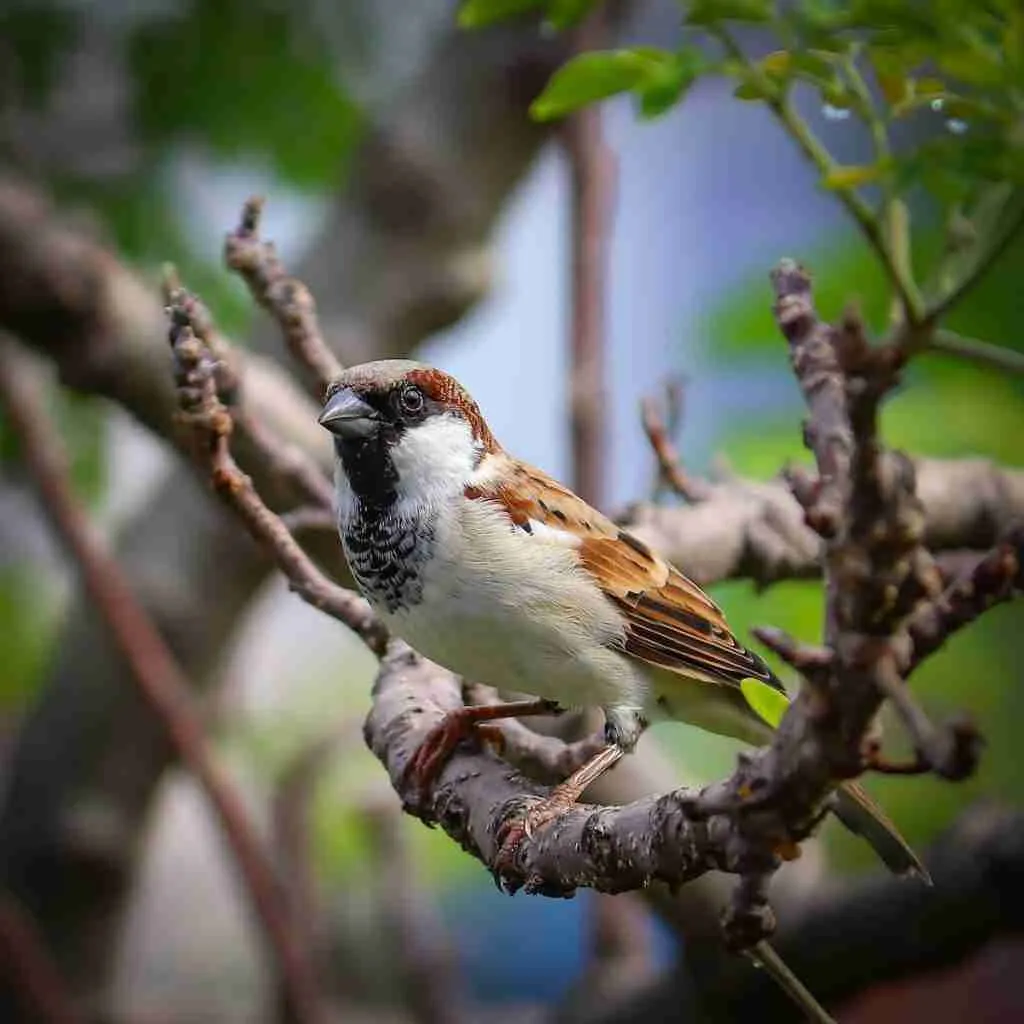
Song Sparrows are one of the most widespread birds in North America. They are small songbirds with streaked brown upperparts and a gray breast with a light-colored belly.
The Song Sparrow has a long, rounded tail and short wings. Their bill is pinkish-brown and slightly curved. Males and females look alike, but juveniles have paler upperparts.
Song Sparrows are found in open habitats including forests, meadows, and scrublands. They build their nests on the ground or in trees and bushes. Diet consists of insects, seeds, and berries. Song Sparrows are small birds measuring about five to six inches in length with a wingspan of eight to ten inches.
The Song Sparrow is the state bird of Massachusetts. These birds are not currently listed as threatened or endangered. However, their populations have declined in some areas due to habitat loss. Some subspecies of the Song Sparrow are still relatively common, but others are not doing as well.
The reason for this decline is not fully understood, but it may be due to changes in the environment such as increasing urbanization, agriculture, and predation.

Chestnut-backed Chickadee
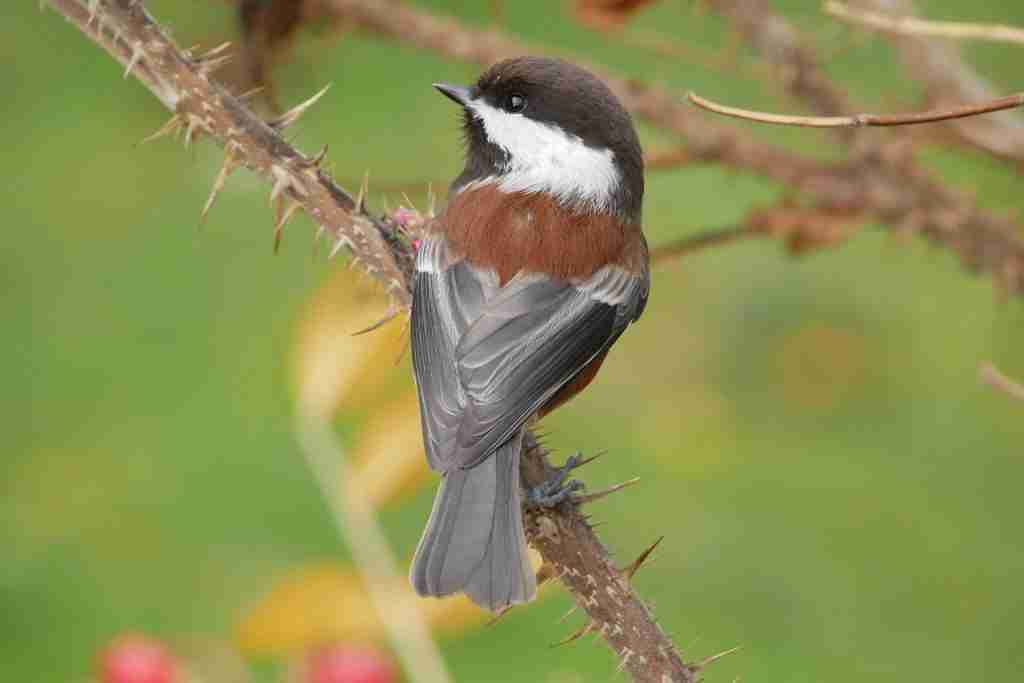
The Chestnut-backed Chickadee is a small, sprightly bird found in forests throughout Alaska. Measuring only four to five inches in length, this little bird is easily identified by its pale gray body and chestnut-brown back.
The Chestnut-backed Chickadee has a black cap and bib with white sides to its face. It has a small bill and a short tail.
The Chestnut-backed Chickadee is an acrobatic bird that often hangs upside down while foraging for food. These birds are constantly in motion, flitting from branch to branch in search of insects and other small invertebrates.
They will also eat berries and seeds. In winter, when food is scarce, they will form small flocks and forage together.
The Chestnut-backed Chickadee breeds in forests throughout Alaska. The female builds a nest of moss and lichens high up in a tree cavity or nest box.
She lays six to eight eggs, which the pair incubates for about two weeks. After the chicks hatch, both parents help feed them until they are old enough to fledge or leave the nest.

Ruby-crowned Kinglet
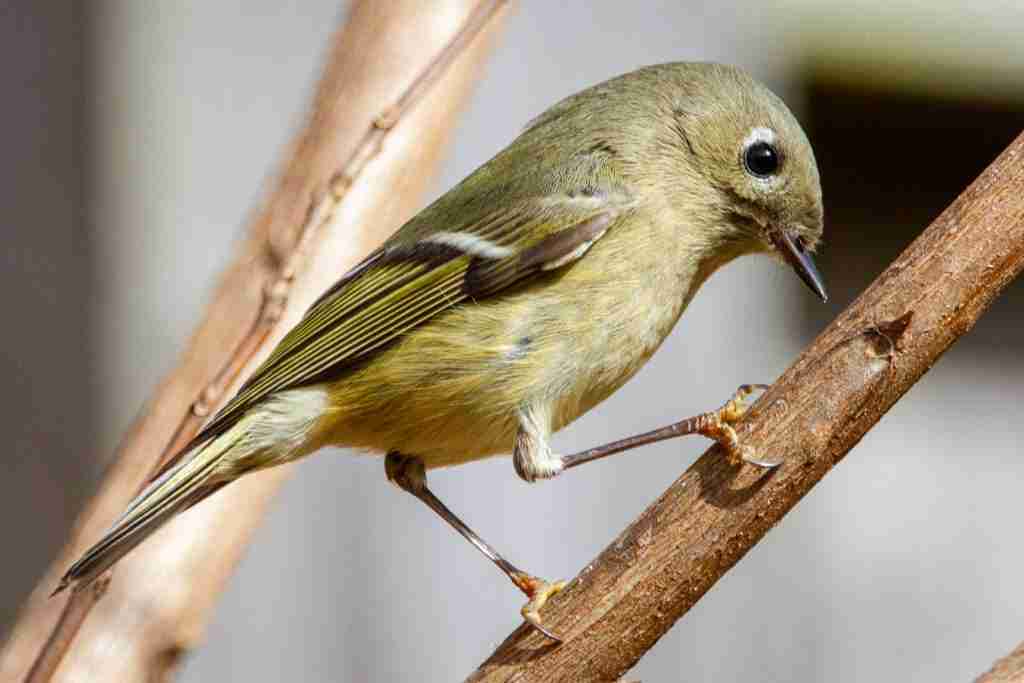
The Ruby-crowned Kinglet is a small songbird with olive-green upperparts and light gray wings. It has two white wing bars, a thin black bill, and ruby red crown feathers that are often difficult to see. This kinglet is found in coniferous forests across North America during the breeding season.
It forages actively in trees for insects, spiders, and other small invertebrates. The Ruby-crowned Kinglet is a non-migratory bird that winters in the southern United States and Mexico.
The Ruby-crowned Kinglet is one of the smallest songbirds in North America. It measures just over four inches long and weighs less than half an ounce. This kinglet has a wingspan of six to seven inches.
The Ruby-crowned Kinglet is sexually dimorphic, meaning that males and females have different plumage. The male has a ruby red crown, while the female’s crown is olive green.

White-crowned Sparrow
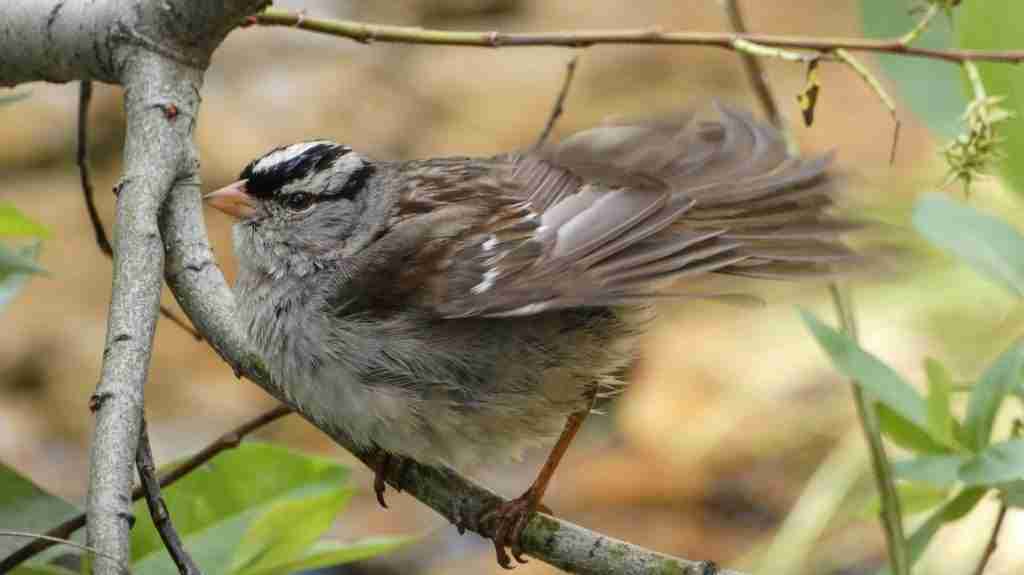
White-crowned Sparrows are one of the most easily identified sparrows in Alaska. They have a white stripe above their eyes and grayish-brown upperparts with black streaks. The males and females look alike. White-crowned Sparrows are about six inches long with a wingspan of eight to nine inches.
Their diet consists mostly of insects and seeds. In the summer, they eat mostly insects. In the winter, they eat mostly seeds.
White-crowned Sparrows are found in open areas with some trees nearby. They nest in trees or shrubs and usually have three to five chicks.
These sparrows are social birds and often travel in flocks. They are also known to sing beautiful songs.

Black-billed Magpie

(Pica hudsonia) is a member of the Corvidae (crow) family and the only North American representative of that family. The black-billed magpie is an interesting bird to watch. It is very social, often seen in small flocks foraging together on the ground or in trees. If you see one magpie by itself, it is usually a juvenile bird.
The black-billed magpie is a very curious bird and has been known to approach humans cautiously but fearlessly. It is also known to follow other animals, including coyotes, foxes, and badgers in the hope of finding food.
The black-billed magpie is a large bird, measuring 19-21 inches in length with a wingspan of 30-34 inches. The adult bird has black upperparts, head, and bill. The underparts are white with strong black markings on the breast and sides.
The tail is long and black with white outer feathers. The legs and feet are black. The juvenile bird has a brown head and back with white underparts. The tail is brown with white outer feathers.

Downy Woodpecker
(Picoides pubescens)
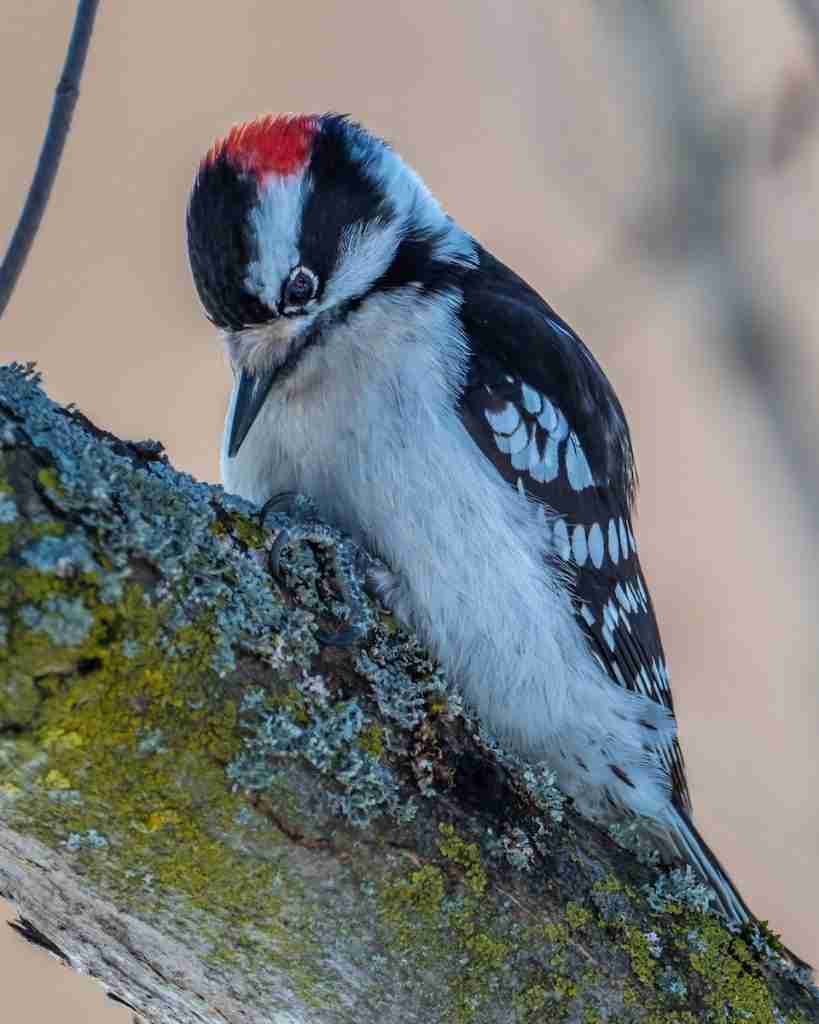
The Downy Woodpecker is the smallest woodpecker in North America, and can be found in forests throughout the continent. These birds are black and white, with a black cap, white cheeks, and a white stripe running down their backs. Males also have a red patch on the back of their heads.
Downy Woodpeckers eat insects, which they find by drilling into tree bark. They also eat fruits, nuts, and sap. These birds nest in holes that they excavate in trees. Both parents help to raise their young.
Downy Woodpeckers are about six inches long and have a wingspan of around ten inches. These birds are black and white, with a black cap, white cheeks, and a white stripe running down their backs. Males also have a red patch on the back of their heads.

Steller’s Jay

Steller’s Jays is a strikingly beautiful bird with bold blue and black plumage. They are one of the few jays that occur in Alaska. Steller’s Jays are relatively large birds, measuring about 12 inches in length from beak to tail. They have a long tails and a shaggy crest on their head.
Steller’s Jays are found in coniferous forests and woodlands. They often build their nests in trees or shrubs. These birds are very social and often travel in groups. Steller’s Jays are known for their loud, harsh calls. They also have a reputation for being aggressive towards other birds and animals.
The diet of Steller’s Jay consists mostly of insects and small invertebrates. They will also eat fruits, nuts, and seeds. Steller’s Jays are known to cache food in the ground for later use.

Yellow-rumped Warbler
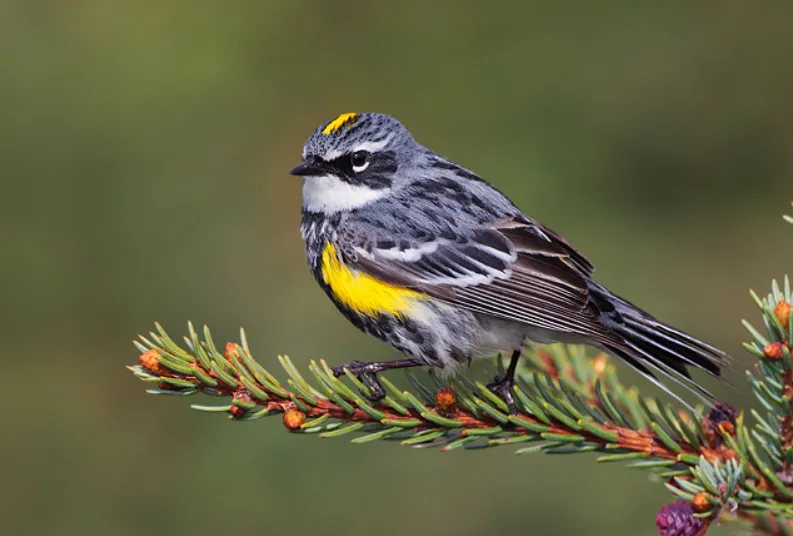
(Setophaga coronata) is a small songbird with bright yellow patches on its rump and wings. It has a black streak on its head, and its back is dark gray. This warbler breeds in the boreal forests of Alaska and Canada, and winters in the southern United States.
Yellow-rumped Warblers eat insects, spiders, and berries. They are often seen in trees and shrubs, but they can also be found in open areas such as fields and roadside edges. These warblers are active and constantly foraging for food.
Yellow-rumped Warblers are monogamous, meaning that they mate with only one partner per breeding season. Both the male and female help build the nest and care for the young. Yellow-rumped Warblers are fairly common birds, and their populations are stable.

Rock Pigeons

Rock Pigeons are the same species as the common city pigeon, and they can be found in a variety of habitats. They are typically gray with two black bars on their wings, but they can also be white, brown, or blue. Rock Pigeon is about 16 inches long and weighs around 24 ounces. They eat seeds, fruits, and insects.
Rock Pigeons mate for life and typically nest on ledges or in cavities. They lay two white eggs per clutch and have up to six clutches per year. Both parents care for the young. Rock Pigeons are social birds and often flock together in large groups. They are also known to roost together in large numbers.
Rock Pigeons are not typically considered nuisance birds, but they can become a problem when they nest in large numbers and their droppings accumulate. They can also carry diseases that can be harmful to humans, such as salmonella.

American Dipper – Cinclus mexicanus

The American Dipper is a small dark songbird with a plump body, short tail, and long legs. The feathers on its back are darker than those on its stomach, and it has a white line above its eyes. It typically measures between five and six inches in length and weighs between one and two ounces.
The American Dipper is found in North and Central America, primarily near streams and rivers. It is a non-migratory bird, meaning it does not travel long distances to find food or mate.
The American Dipper feeds on insects, larvae, and small fish. To catch its prey, the dipper will dip underwater and swim using its wings for propulsion. It is an excellent swimmer and can stay underwater for up to a minute at a time.
The American Dipper is a vocal bird, and its song has been described as “a rich, flute-like warble.” The dipper will also make a variety of other sounds, including clicks, chirps, and whistles.

European Starling – Sturnus vulgaris
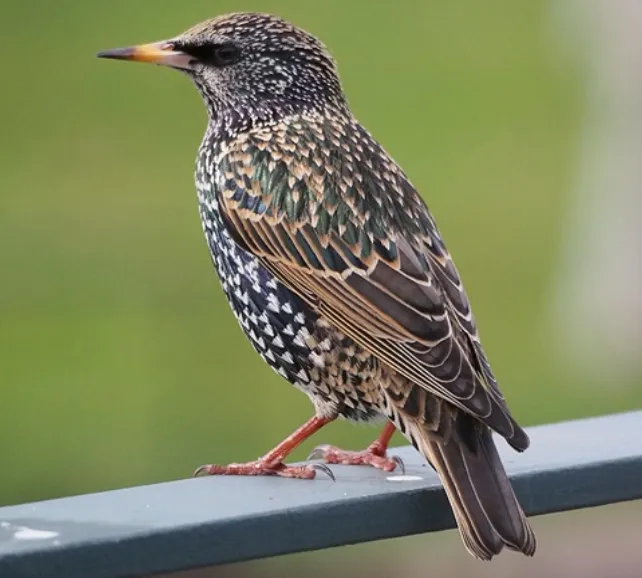
The European starling is a small to medium-sized songbird. The adult has black plumage with iridescent feathers on the back and wings. It has a long, pointed beak and yellow eyes. The juvenile bird is browner in plumage.
The European starling is found in open habitats such as woods, farmland, and parks. It is a common bird in Europe, Asia, and North America.
The European starling eats insects, earthworms, berries, and fruits. It forages on the ground or in trees.
The European starling is a social bird. It forms flocks of 20 to 30 birds. The bird performs acrobatic displays in flight as part of its courtship ritual.
The European starling is not considered to be a threatened species. However, its numbers have declined in some parts of Europe due to habitat loss and changes in farming practices.

Golden-crowned Kinglet – Regulus satrapa
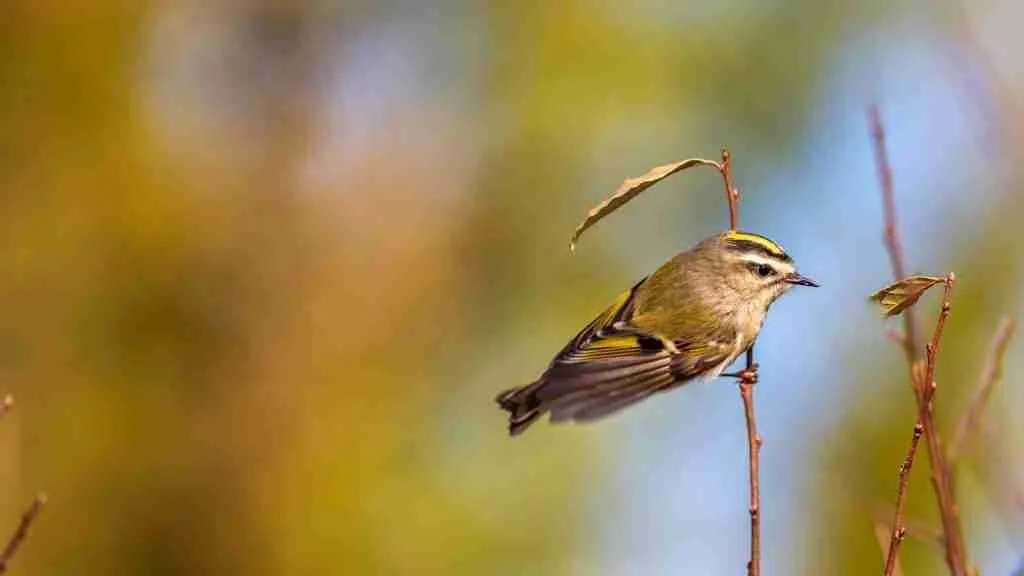
Golden-crowned Kinglet is tiny bird with an oversized head and bill. They have a golden crown, white eyebrows, and grayish upperparts. The underparts are whitish with heavy brown streaking.
These kinglets are constantly in motion as they forage for insects on twigs and branches. Their diet consists of spiders, mites, caterpillars, and other small insects.
They breed in coniferous forests across Canada and Alaska. In winter, they often form large flocks and can be seen in woodlands and gardens foraging for food.
They are one of the smallest birds in North America, measuring only about four inches long.

Pine Grosbeak – Pinicola enucleator

The Pine Grosbeak is a chubby, short-necked bird with a large head and bill. Males are rosy red, while females are grayish brown. This species breeds in the boreal forests of North America and Asia. In winter, they move south to lower elevations in search of food.
Pine Grosbeaks eat mostly seeds and berries, but will also take insects, especially in summer. These birds often form large flocks and can be seen feeding in trees or on the ground. They are not shy around humans and will often approach people in search of food. Pine Grosbeaks are one of the few bird species that actually seem to enjoy cold weather!
They are often seen in the snow, foraging for food or taking a dust bath. These birds are not particularly vocal, but they do make soft cooing noises. Pine Grosbeaks are beautiful birds that are fun to watch in any season.

Hoary Redpoll – Acanthis hornemanni

The Hoary Redpoll is a small, sparrow-like bird with a red cap and black spots on its wings. It has a white belly and gray back. The Hoary Redpoll is about the same size as a House Finch. It eats mostly seeds, but will also eat insects.
The Hoary Redpoll breeds in the tundra of Alaska and northern Canada. It nests in a cup-shaped nest made of moss, lichens, and down. The female lays four to seven eggs.
The Hoary Redpoll is active during the day, but is often seen in flocks of other birds such as finches and sparrows. In winter, Hoary Redpolls often form large flocks and may visit bird feeders.

Bohemian Waxwing – Bombycilla garrulus

The Bohemian Waxwing is a medium-sized songbird with grayish brown upperparts, pale gray underparts, and black wings with white markings. The tail is usually black with white tips. They have a crest on their head and a black “mask” through their eyes.
Adults have yellow tips on their secondary feathers. Their legs and feet are black. Males and females look alike. Bohemian Waxwings are about 11-13 inches long with a wingspan of 16-18 inches.
The diet of the Bohemian Waxwing consists mainly of fruits and berries, but they will also eat insects, especially in the summer. They often feed in large flocks and can be seen perching in trees and shrubs.
The Bohemian Waxwing breeds in open coniferous forests in Alaska, Canada, and the northern United States. They nest in trees, often near the top of the tree. The female lays three to four eggs which hatch in about two weeks.

Gray-cheeked Thrush – Catharus minimus

The Gray-cheeked Thrush is a small thrush with olive-brown upperparts, heavily streaked grayish-brown underparts, and a rusty breast. It has a white eye-ring and eyebrow, as well as a short bill with a slightly upturned tip.
This thrush breeds in northcentral Alaska and winters in southern Mexico. It is a very rare vagrant to western Europe.
The Gray-cheeked Thrush is insectivorous, feeding primarily on beetles and caterpillars. It forages on the ground or in low vegetation, turning over leaves with its bill to find food.
This thrush breeds in dense coniferous forests, generally near the edge of the tree line. The nest is a well-concealed cup made of moss, lichens, and leaves, lined with hair and feathers. The female lays three to five eggs, which are incubated for 12-13 days. Both parents feed the young birds.

American Pipit – Anthus rubescens

The American Pipit is a small songbird with a long, slender bill. They are brown above and buff to white below, with streaked breast and flanks. The juveniles are similar to adults but paler overall. This bird’s diet consists mostly of insects, which they glean from the ground while walking or running.
These birds breed in the Arctic and subarctic regions of North America and Eurasia. They nest on the ground, usually in an open area near water. The female builds the nest out of grass and moss, line it with feathers, and incubate the eggs for about two weeks.
The American Pipit is a migratory bird, wintering in the southern United States, Mexico, and Central America. Some birds may also remain in their breeding areas year-round if food is abundant.
This bird is not currently considered to be at risk of extinction. However, its population has declined in recent years due to habitat loss and degradation. American Pipits are protected under the Migratory Bird Treaty Act.

Rufous Hummingbird – Selasphorus rufus
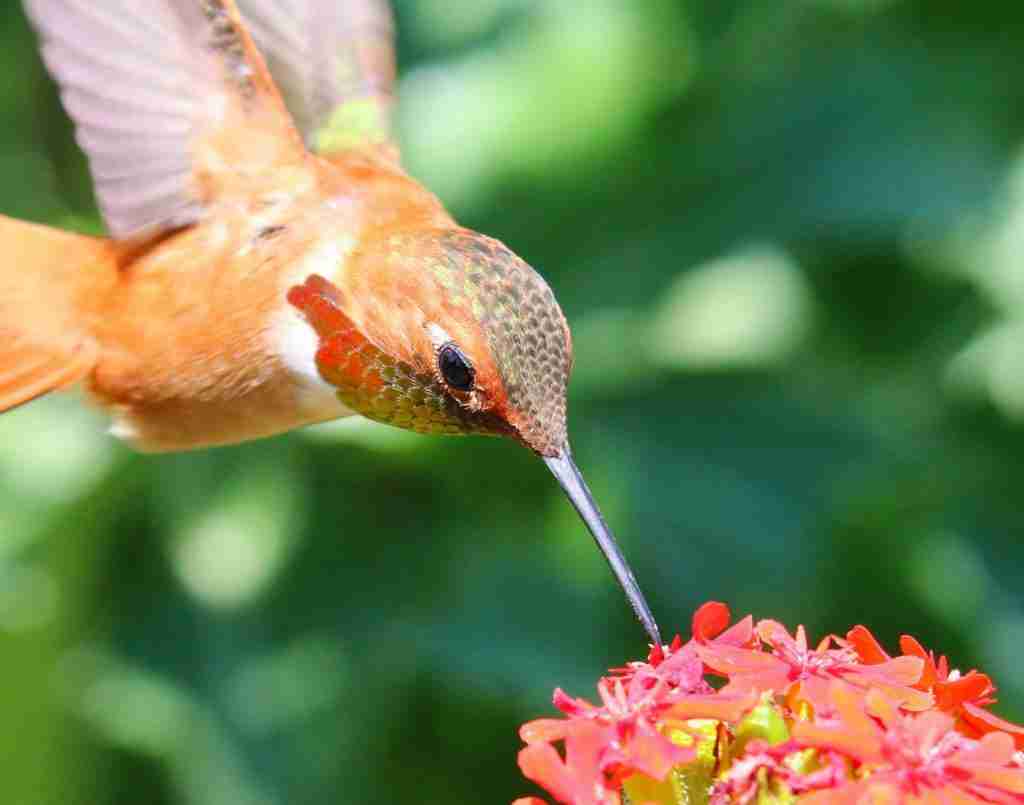
The Rufous Hummingbird is a small bird, measuring only about three inches in length. It has a reddish brown body with a green back and tail. The male of the species has an orange-red throat, while the female has a white throat with some red spots.
Rufous Hummingbirds are found in open woodlands and forests in the western United States and Canada. They migrate to the southern United States and Mexico for the winter months.
The diet of the Rufous Hummingbird consists mainly of insects and nectar from flowers. They are constantly on the move, flying from flower to flower in search of food.
Rufous Hummingbirds are very territorial and will defend their feeding areas from other birds. They are also known to be aggressive towards humans if they feel threatened.

Lincoln’s Sparrow – Melospiza lincolnii
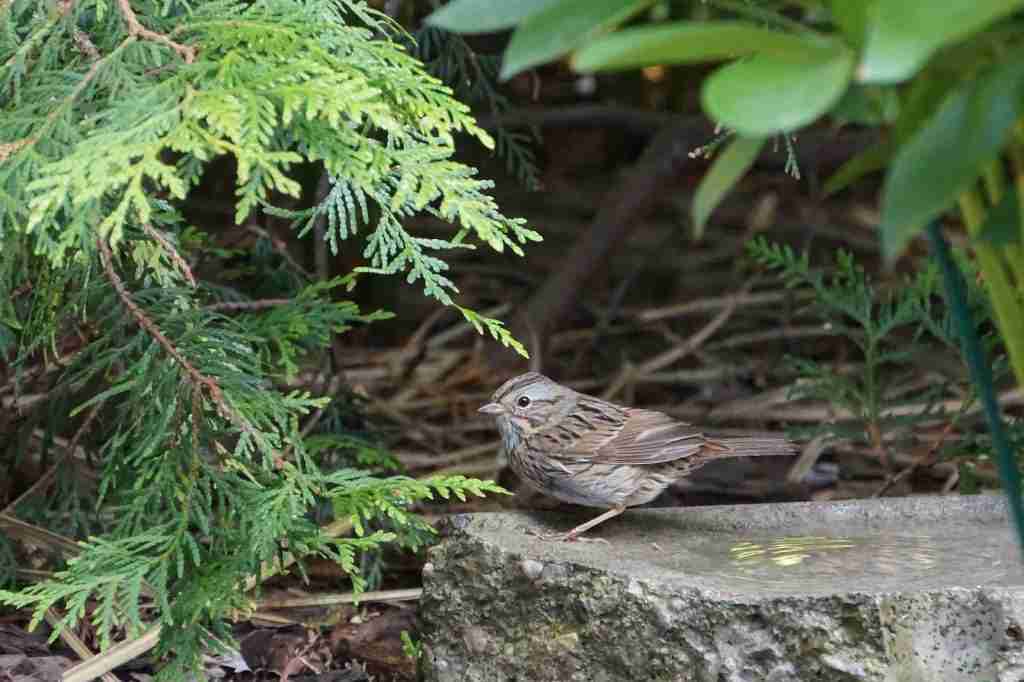
Lincoln’s Sparrow is a small sparrow with streaked brown upperparts and buff underparts. It has a rusty cap and a pale eye-ring. The bill is pinkish-gray.
This sparrow forages on the ground in dense vegetation, often in wet areas. It mainly eats insects and spiders, but also seeds.
The Lincoln’s Sparrow is about five and a half inches long and weighs less than an ounce.
Lincoln’s Sparrows breed in wet habitats across northern North America. In winter, they are found in southern Canada, the United States, and Mexico.
These sparrows are relatively shy and secretive birds. They are often heard rather than seen. When they are disturbed, they will sometimes flutter their wings and tail to show their alarm.
Lincoln’s Sparrows are not currently considered to be at risk. However, like many other birds, they may be affected by habitat loss and degradation.

What’s the most common bird in Alaska?
The most common bird in Alaska is the ptarmigan. The ptarmigan is a small, chicken-like bird that lives in the tundra. Ptarmigans are well-adapted to the cold weather and can even change their plumage to white in winter. These birds are important to the Alaskan ecosystem and are hunted by many animals, including humans.
What kind of birds do they have in Alaska?
There are many different types of birds in Alaska. Some of the most common include bald eagles, ravens, and ptarmigans. There is also a variety of waterfowl, such as ducks and geese. Birds of prey, such as hawks and owls, can also be found in Alaska.
What are the black and white birds called in Alaska?
There are many black and white birds in Alaska, but the most common one is the ptarmigan. The ptarmigan is a small bird that lives in the tundra. It has a white body and black wings. Ptarmigans are known for their camouflage.
They can change their plumage to match their surroundings. In the winter, their feathers turn white to match the snow. In the summer, their feathers turn brown to match the earth. Ptarmigans are also known for their tasty meat. They are a popular game bird in Alaska.
What birds stay in Alaska in winter?
There are many winter birds in Alaska, including ptarmigans, snow buntings, and ravens. Some of these birds are able to withstand the cold weather by growing extra feathers or changing their feather color.
Others find food sources that allow them to survive the winter months. Still others migrate to warmer climates until spring arrives. No matter how they adapt, these birds are an important part of the Alaska ecosystem.
Birds are not the only animals that stay in Alaska in winter. Many species of fish, mammals, and reptiles remain active throughout the cold months. Some animals hibernate or migrate, while others adjust their behavior or physiology to survive the winter.
How many birds are in Alaska?
There is no definitive answer to this question as the bird population in Alaska is constantly changing. However, according to the U.S. Fish and Wildlife Service, there are more than 400 species of birds that have been recorded in Alaska.
This number includes both resident and migrant birds. So while we may not be able to give you an exact number, we can say for sure that there are a lot of birds in Alaska!

An avid ornithologist, zoologist and biologist with an unwavering passion for birds and wild animals.
Dr. Wilson’s journey in ornithology began in childhood and led him to obtain a Ph.D. in Ornithology from the prestigious Avian Research Institute. He has worked closely with renowned experts in the field and conducted extensive research and field studies globally.

